On the way back from cleverly deciphering the Georgia Guidestones, we passed through the Granite Capital of the World, which is Elberton GA (according to them).
Dawdling is interesting sometimes, and we had to check out the Little Southern Towns up here. It’s just a few miles from the lake near the SC border.
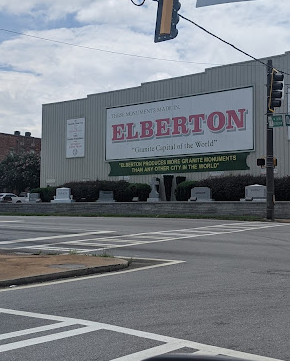
Directions
From the Georgia Guidestones, take a left. That’s it. The road will lead you into the Granite Capital of the World.
From the Firefly, pretty bed and breakfast near Madison GA, the best plan is to use GPS, unless you follow the instructions I gave you the other day to the Guidestones, then take a left.
Why are we telling you this?
In this case there are some especially interesting things to learn about the local industry.
Why are we telling you this? Well, it’s because there are a lot of day trips near Madison, and we do enjoy putting our guests onto some interesting experiences. We’re practically experts on travel in the southeast US. If you are a visitor from Europe and California, it’s fun to know that there are still places like this.
Local History
Based on research from one of the historical markers at the courthouse, the road you were just on is actually older than the town. This is one of Georgia’s oldest cities, and was founded before 1800 as a bit of a place along the postal route.
This place became the county seat in 1790, and got their “new courthouse” in 1894, an era when it was evidently fashionable to be in the local lodge.
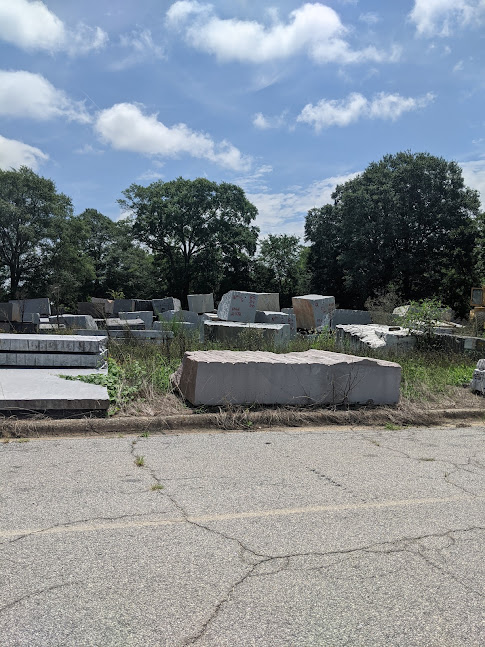

The first commercial granite quarry was opened here in 1889. At some point thereafter, this place became the “The Granite Capital of the World.” There are still a lot of big blocks of granite laying around. We had to like the “Student driver” thing. Evidently what happens is that these huge master blocks are cut out of the ground around here, and further cut and polished into mainly headstones at this point.
We drove by a few of these little operations and it looks like they’ve reduced themselves to selling gravel. I suppose it still counts. Since the local deposit is about the same color as the rock we put on the driveway at the Firefly, maybe we got some of theirs.
So, here is where we have to talk about a resource-based economy.
Resource Based Economies
A resource-based economy is where you dig something out of the ground, and further process it and/or sell it. It could be any of a dozen things, including gold, oil, rare-earth metals, Kaolin (which comes from Central Georgia) or granite. I think granite is part of the local geo-morphology in this part of Georgia and it is likely that if we started digging at the Firefly, we would eventually hit some.
So, in an economy like that, here are the five things that could happen:
- Everything can keep going on just the way they are forever, and you are good.
- You can run out of whatever it is. The western US has ghost towns that this happened to.
- An alternate or substitute can be found.
- The underlying demand disappears.
- The cost for you to extract it goes through the roof for some reason.
The Story of Elberton in One Graph
Here it is. You know how we love to do this. The data is from the Wikipedia link.
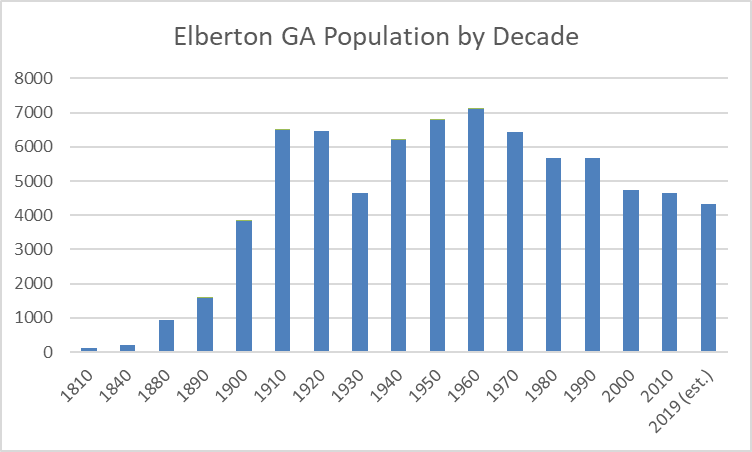
So it looks like this place had the same “great migration” as the rest of Georgia, when the farm economy changed in 1920. They had another brief golden age in about 1960, and since then, it has been a little rough. The population today is less than what it was in 1910, 110 years ago.
The town is not rough, though. The downtown area is full of a lot of nice old buildings, including the courthouse. and we found the place to be tidy. Air conditioning has not completely made it here yet.
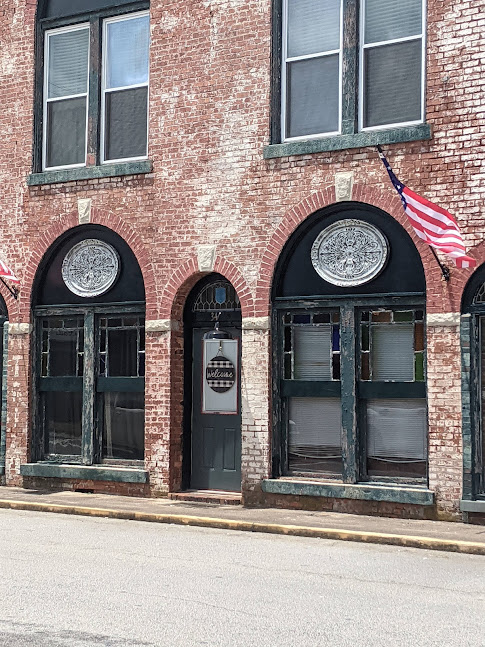
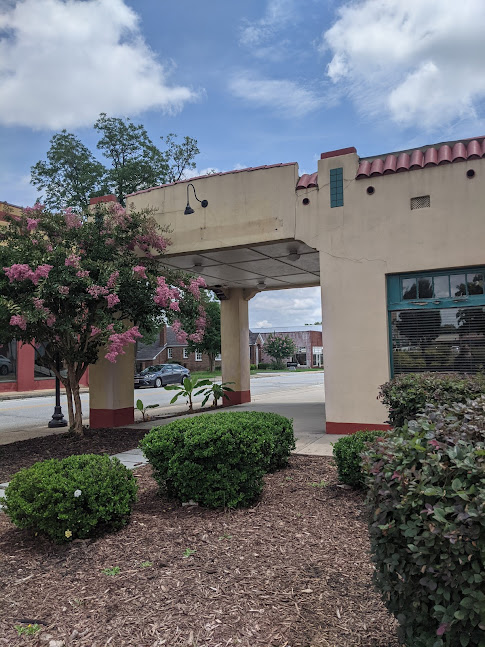
So what’s the story?
If we were to guess, 3 and 4 are the prime candidates.
According to the reference below from US News, as of 2018, the rate of cremation in the US was nearly 50%. One need only drive around a lot of the little church graveyards in this place to understand how the fashion in marking peoples’ graves have changed.
150 years ago, it was sort of expected for you to lavishly devote resources to marking the grave of a departed loved one. The culture at the time had rituals for doing this, as we have already talked about.
The second one is, that come to find out, granite exists elsewhere. According to Stone News, 65% of the block granite in the world is now dug out of the ground from China. When the tariffs were imposed, circa 2018, the imports shifted to India. Issue #5, above, probably didn’t happen. There is no suggestion that it costs any more to cut granite blocks than it ever did. But, surely there is a labor element to it that gave these other lands an advantage.
The trend toward granite countertops might have been a boon, except that according to “Granite color selection.com” none of the preferred choices is gray. Joanna Gaines has switched to concrete. Since the local deposit is gray, it is what it is. We actually saw a nice white block of granite with Asian calligraphy in the block yard.
So, that’s what happened. According to the Wikipedia article, the local per-capita income in this place is now $15,000, versus $66K/year for the rest of the nation.
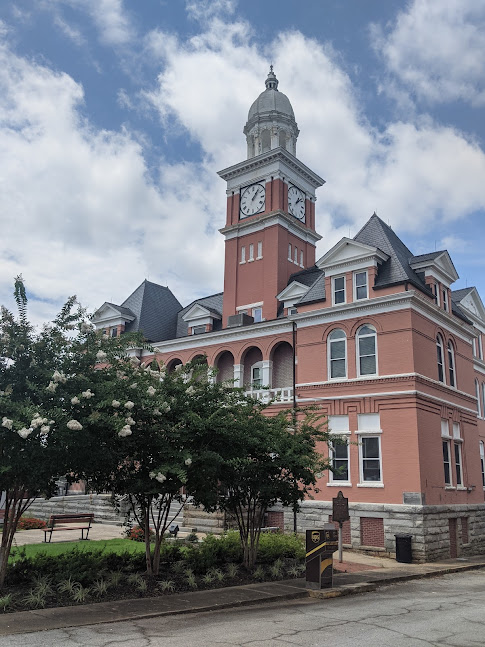
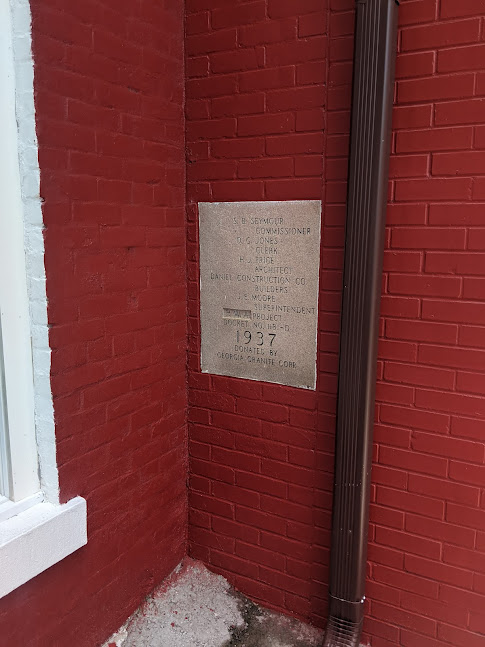
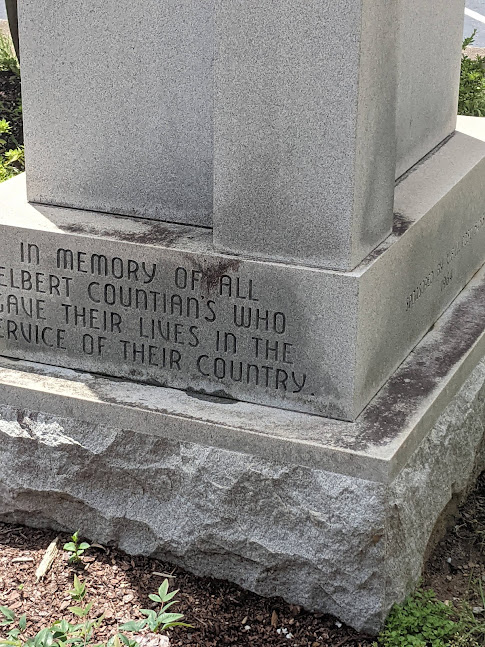
So, what is going on in town?
Let’s go out on a limb and say that in 1960, the prevailing theory was #1 above. Did anybody foresee that 90% of the granite in the US would be imported? That’s what happened, according to Granite Guy. They didn’t diversify their economy, because “they” didn’t think they had to.
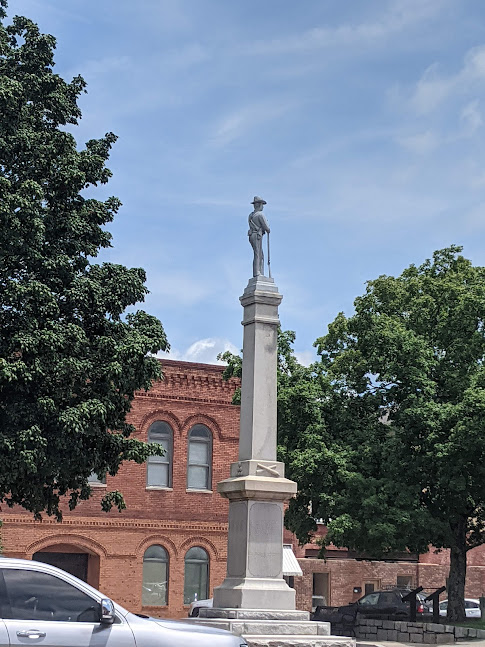
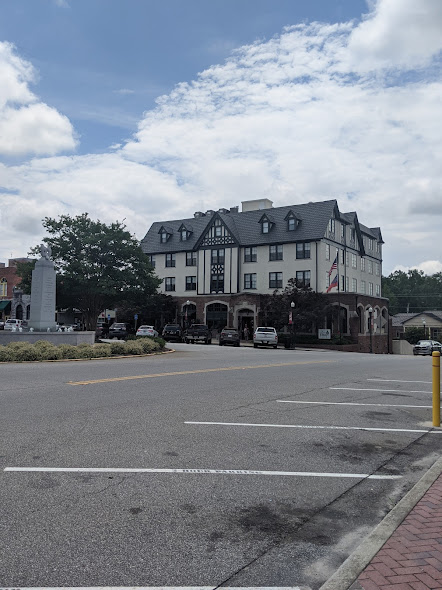
The Granite Capital Of the World walking tour.
We did walk around the place, and to outsiders, which we obviously were, the town looked very liveable. In 1995 the big tudor hotel on the courthouse square, the Samuel Elbert Hotel was restored. An establishment in its lobby was serving fragrant onion rings.
There was a place, Home Sweet Home, which is the kind of place we like that sells hand-made things, but it is closed on Wednesday. We’d have bought something home made in there. Evidently we also missed the Harmony Farms outside town, which has the kind of things we like. The Granite Capital of the World could pretty easily become the Healthy Food Capital with some guidance.
We strolled by a couple of fellows in front of the town barber shop with spare time. That seemed pretty innocent.
We eventually walked into a little consignment place, and looked around. We usually like this kind of place. The operators greeted us warmly, and offered to sell us a flag for the front yard, of the type that we don’t really want, because of its colorful stars-and-bars design. There was an interesting collection of baseball bats, odd porcelain dolls, and assorted relics from the past. Air conditioning hadn’t made it in there yet.
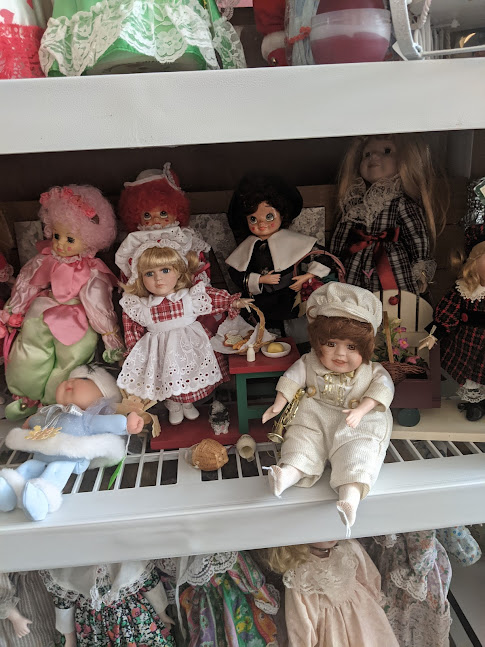
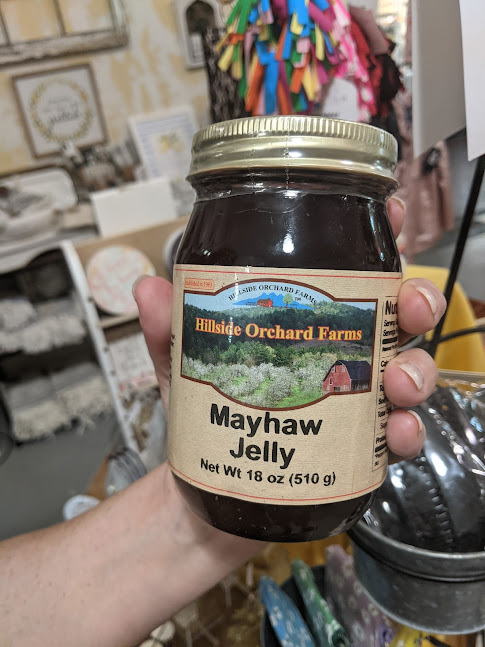
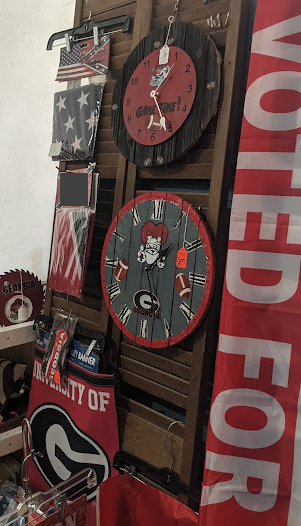
We came upon a book: 18th edition of Joel Chandler Harris’ “Uncle Remus and his Friends” circa 1895, which they were selling for $19. They had it behind the counter. A conversation broke out.
Us: “Hey you do know this is an original printing from 1895 don’t you?”
One of them: “We knowed that was old. We was seein’ 1851 in there.”
Us: “Yeah that’s the original copyright date. The print date is 1895.”
The Story Continues
One of them: “Yeah, that thaing is still in good shape fer that old.”
Us: “Yes it is. Hey, did you know you can probably sell this on Alibris or E-Bay for a lot more. I bet you could get $100 for it.
One of them: “Whassat?”
Us: “Alabris? Oh that’s a website. Can you google it?”
One of them: “Uh. not really. All I got is this flip phone.”
Us: “Here let me write it out for you.” (scrambles for a pencil and paper)
One of them: “We might could try it. We never sold nothin’ like that. We ain’t too technical”
Us: “It’s easy. Once you do it the first time, you’ll be addicted.”
One of them: “I might could get addicted to the $100”
We ended up stimulating the local economy by buying a jar of Mayhaw Jelly, after an exchange on the question of whether or not it was “fresh.” The dust on the jar suggested that it was “not fresh” but the price was sort of right. It’s corporate policy to bring home something that you hope is tasty.
We have to invoke the Prime Directive occasionally when we don’t want to. In this case, we didn’t feel like giving an internet lesson. We would have to leave the following question unanswerable: What else in that place is worth much more than its uninformed price.
But, there is a lesson here somewhere.
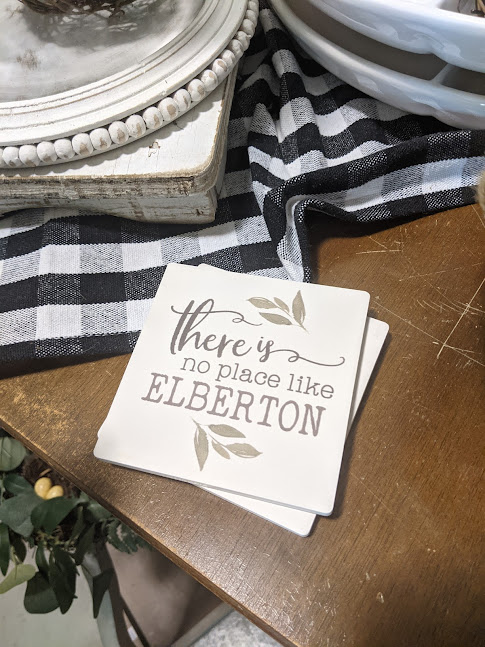
Kathy’s Korner
We surfed into and out of there. There was a pleasant lobby, with a little restaurant, and a gift shop with “Apparel Mart” type items. That’s where we saw the “No place like Elberton” coaster, to which we had to completely agree. A fellow was selling swimming pool chemicals in the back, and wasn’t especially talkative when we asked him how many people in town have swimming pools.
He seemed to think, in this place where the Per Capita Income was $15K that there are a lot.
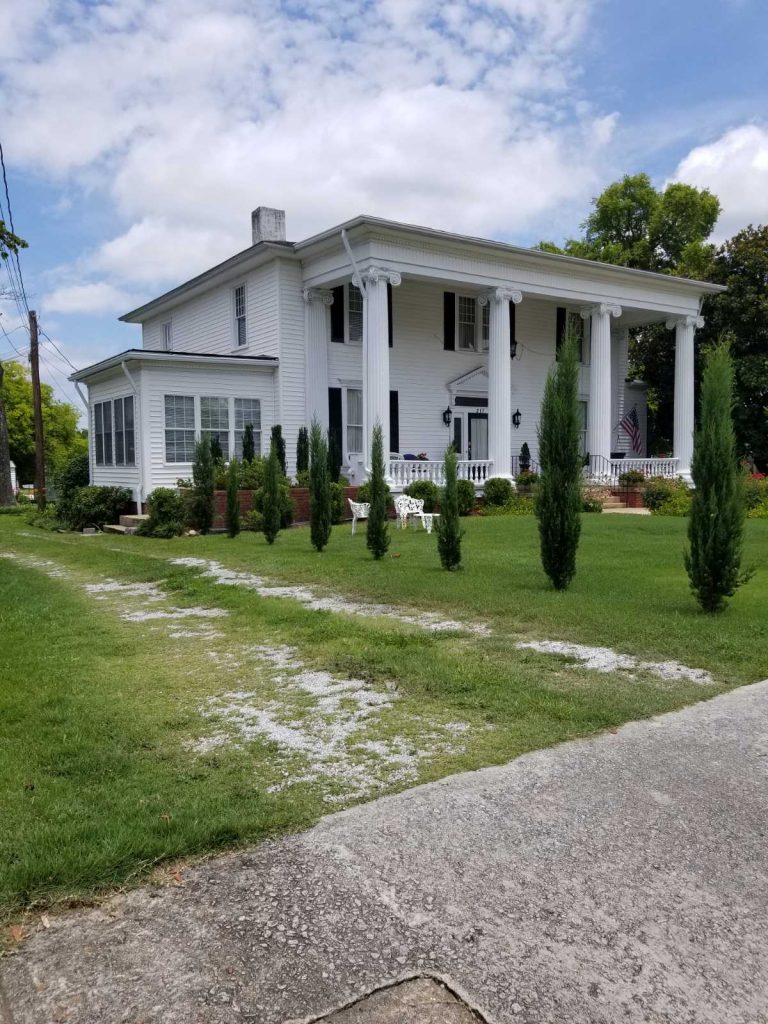
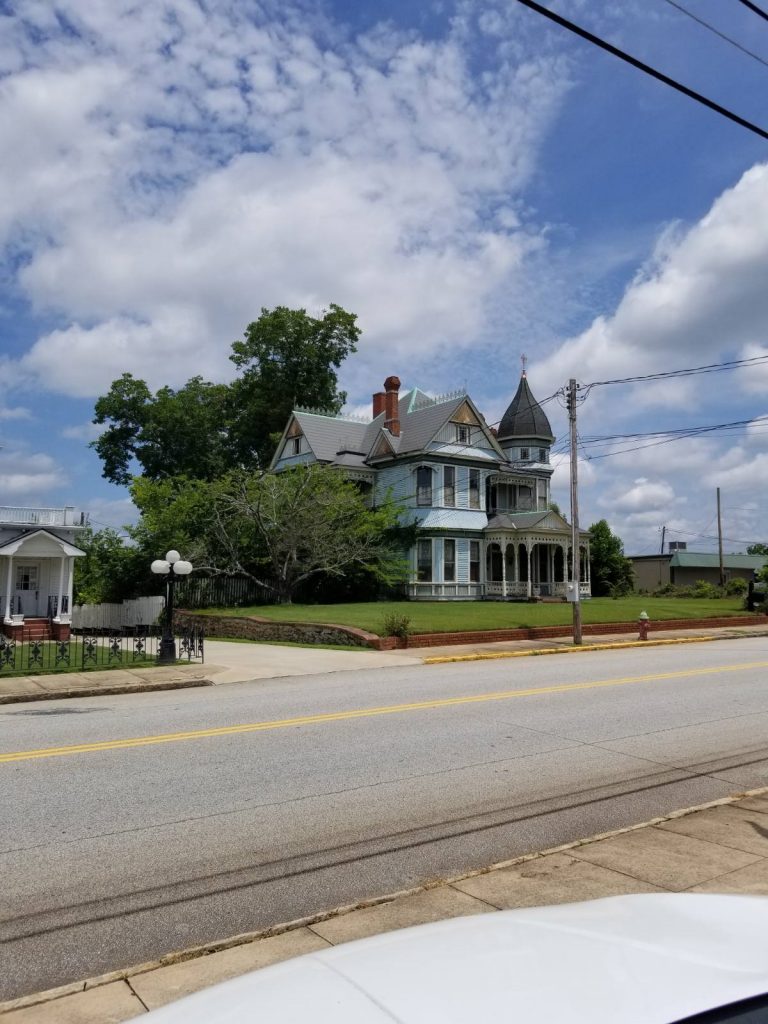
The Rich Guy’s House
We are getting better about finding it. In this town, it’s right across from the Prosperous Church, where it belongs. Heard Street.
Since we’re now “Zillow Stalking” the Rich Guy’s House, we found out that the current value of this lovely old Greek Revival is $178,000. This particular one is a reproduction, built in 1882. The other nearby rich guy house, which is now the funeral home, is listed for $450K and the “nice bones” Victorian Addams Family house, right next door, is $234K, but it is a bit more of a fixer upper.
So if your dream home is to live in one of these big old houses with the columns, this place is your opportunity. The same place is over $1M in Madison.
The Unwritten Stories
- Some nice, bright, tech savvy person decides to flip out, and move to the country. He lives in the antebellum home and starts the Elberton tech empire. No covid no problem. You’re only 40 minutes to Athens. If you lived in Atlanta your commute would be longer, but you don’t care. Actually the Greenville airport is closer.
- A project is started up to bring some of the other locals into the 21st century regarding technology, with hilarity because of their slow acceptance of change.
- Someone decides to make PPE in one of the local empty buildings, with hilarity as they try to retrofit it for modern production, and find an efficient workforce.
- A positive word is put out, the Georgia Guide Stones become the calendar and clock they were built to be. Every year, on the solstices and the equinoxes, there is a festival which fills up the hotel and shops.
- Someone goes through that antique place, one item at a time, and tries to figure out how much everything is worth. Some rare, fun artifact is found that is worth $250K and the people move into the Greek Revival.
- There is a movement toward elaborate funerals, and ornate monuments, and the town comes back. That one is a long shot.
- A group of immigrant hippies from Asheville moves into one of the old buildings, turns the town upside down, and makes it an art tourism destination. This is actually what happened in Asheville, so it is plausible. Starving hippie artists are fun to have in town.
Lexington
We took the winding, traffic free road to the town of Lexington, the county seat of Oglethorpe County. We didn’t really have enough battery left to photo the rich guy’s house or the courthouse, but suffice it to say, a similar real estate bargain could be had 25 minutes closer to Athens. That place seemed a bit more interesting somehow.
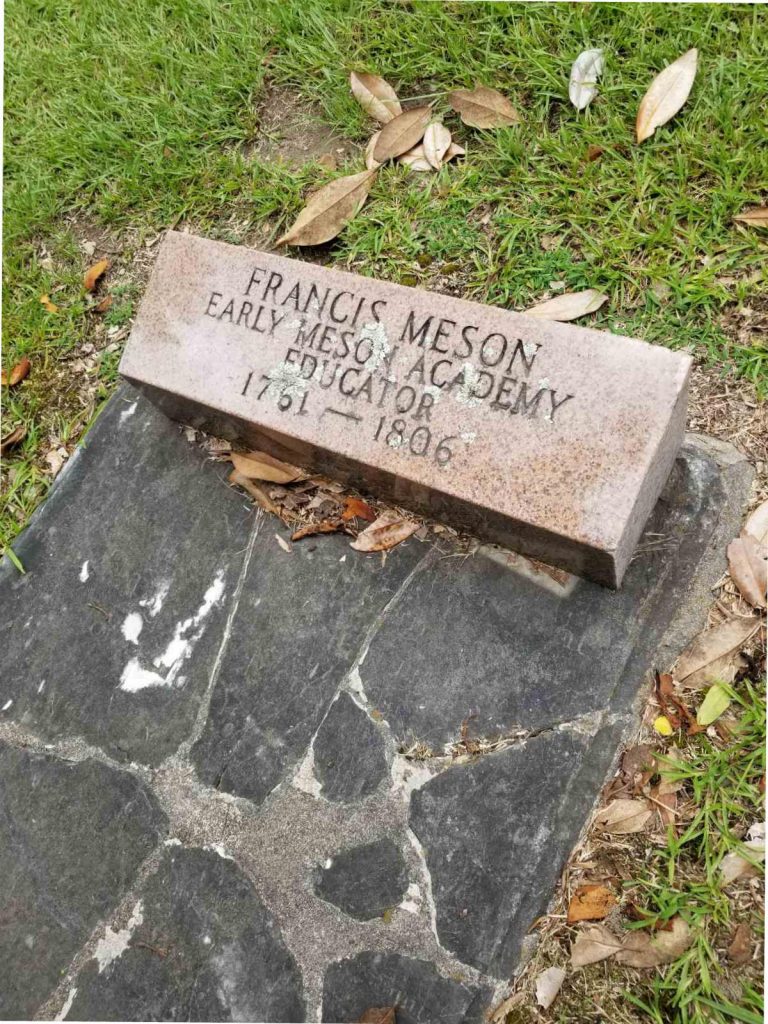
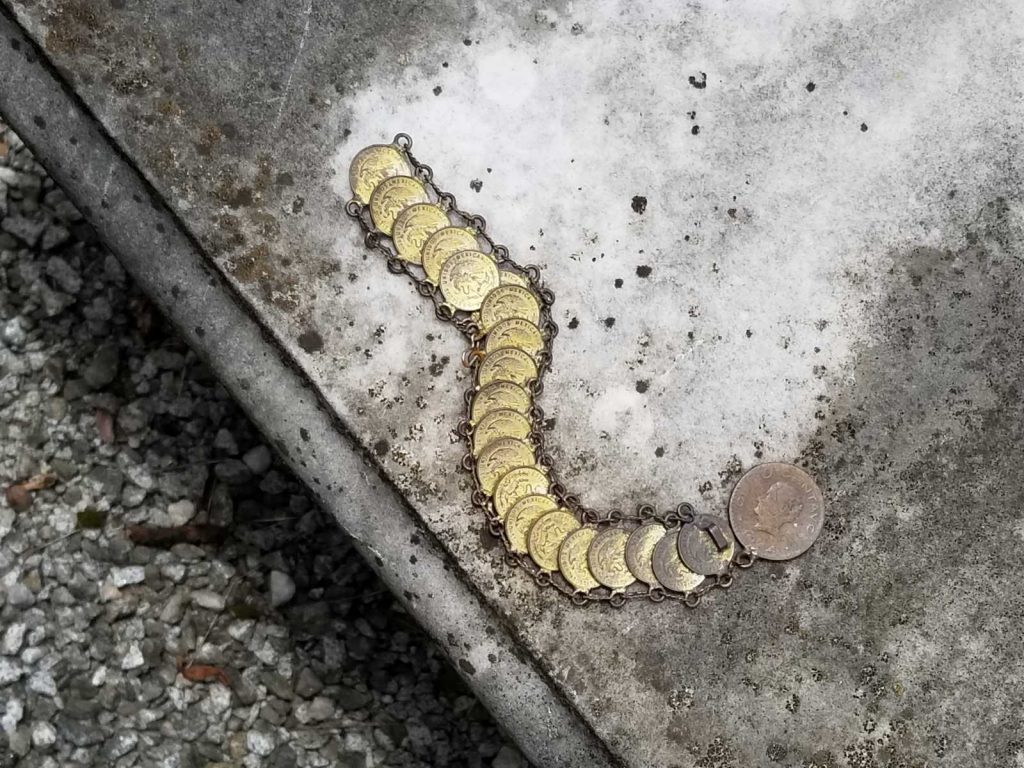
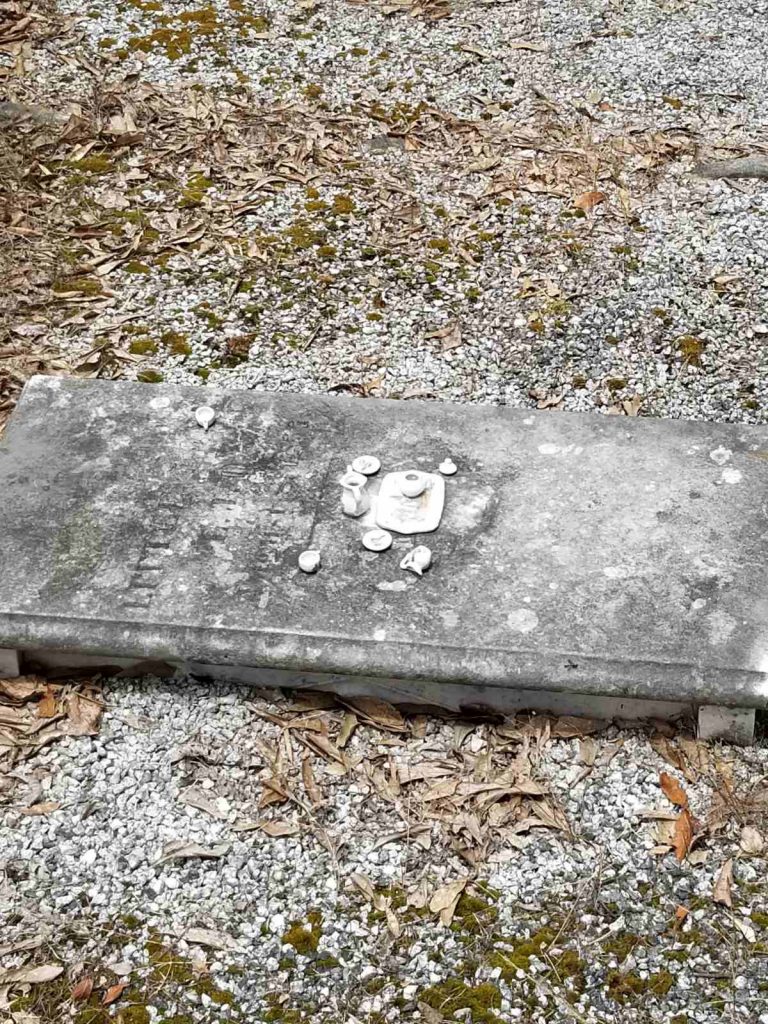
We wandered around in the little church, which is the Lexington Presbyterian Church, which was started in 1785. When we have time, sometimes, we like to walk around in the graveyard, because there is always a story. In a way, it’s a pity that there aren’t more gravestones. Cremation and ash scattering is not the best for stories.
This is the resting place of George R. Gilmer, former Governor of Georgia. He is at one end, overlooking the rest of the paritioners.
On one of the little child’s graves has a little porcelain tea set, laid out as if to play. Couldn’t read the date because it was too faded. A gift from some surviving sister or cousin?
Another more manly grave,, in the corner, has a woman’s bracelet, made of a string of Mexican coins. It was pesos and centavos, the date was 1949. What possible connection could there be between a civil war era cemetery ghost, and a Mexican female sometime after 1949?
Reverend John Newton, the founder, also ended up here in 1787. He appears not to be the “John Newton” who lived at the same time, and wrote the song “Amazing Grace.” Is there a connection? Is it the same person? There is a story here somewhere.
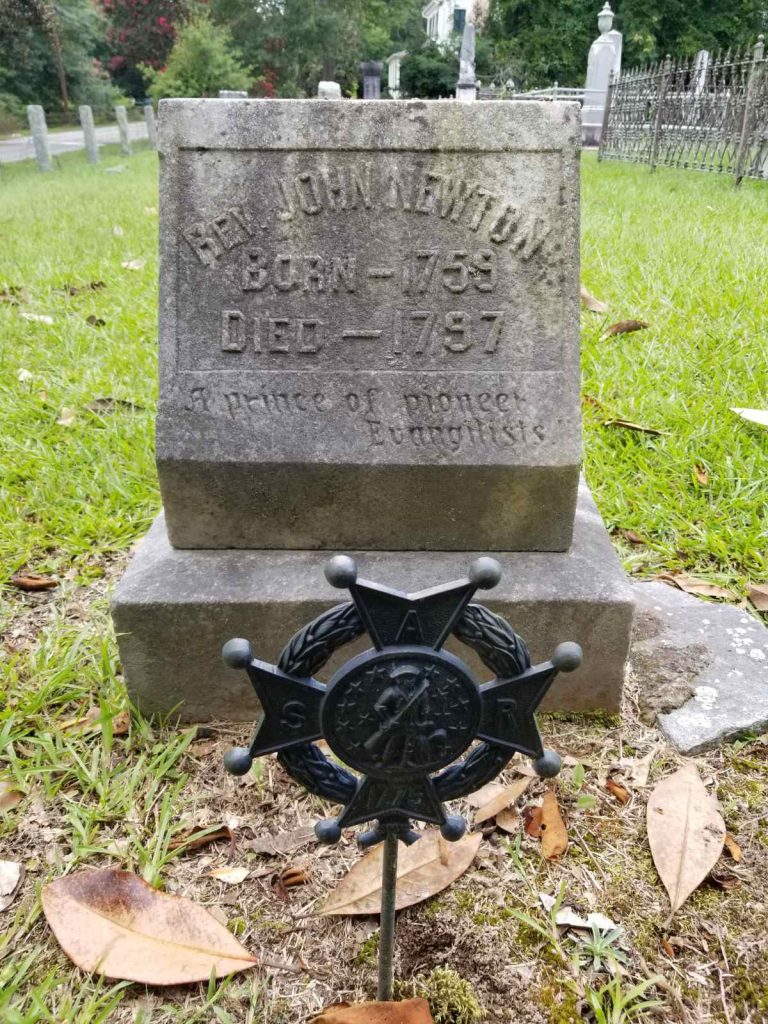
Comfort Food
Driving, plus mysteries, plus playing the “what if” game means comfort food. The venue was “Fully Loaded Pizza” in Athens, and the feast was Cannoli and Tater Tots.
At any little college spot like this, if you look around the room, you can very often come up with story lines. The attractive couple in the corner were just friends. The 22 year old bar worker and the 45 year old manager were exchanging flirting glances, while they served shots to each other. An animated group of ladies was on the patio, and an older couple, in the corner, were eating their pizza and not talking to each other.
It’s hard to see how anybody gets writer’s block. Stories are all around, if you choose to look for them.
Be there in the square. We know a realtor, for when you abandon the Covid-paralyzed city and move into the Greek Revival.
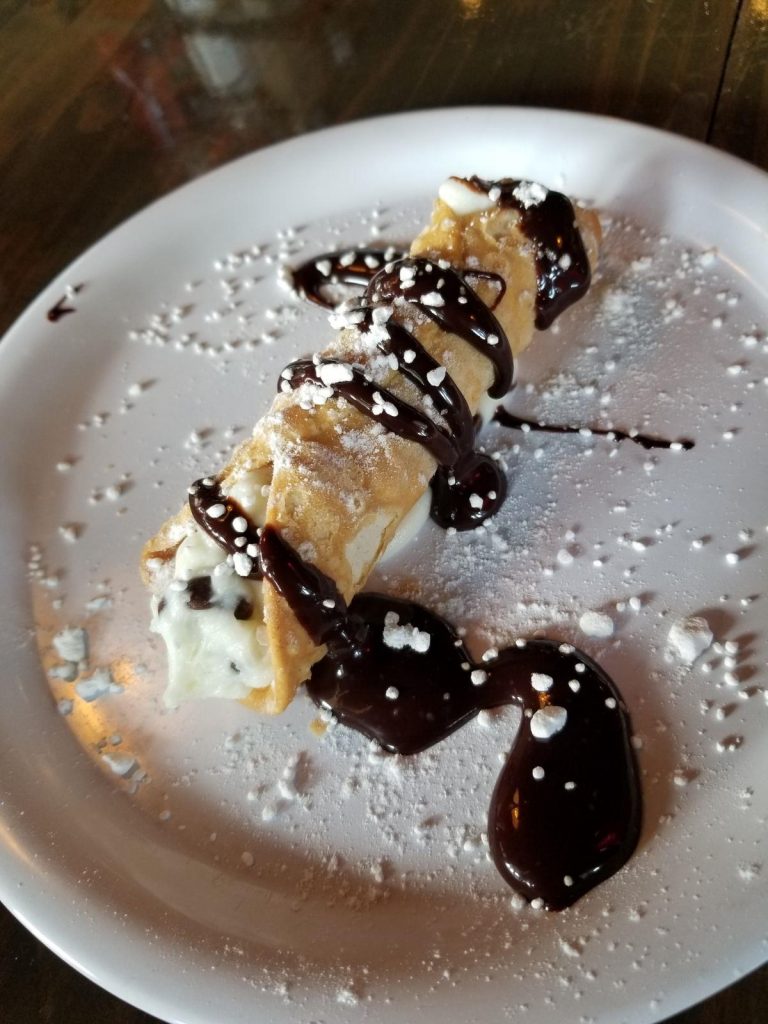
Links and References
https://en.wikipedia.org/wiki/Elberton,_Georgia
https://www.google.com/travel/hotels/s/kX4dn
https://www.homesweethomeelberton.com/
https://www.zillow.com/homedetails/239-Heard-St-Elberton-GA-30635/105239871_zpid/
https://www.zillow.com/homedetails/231-Heard-St-Elberton-GA-30635/243935627_zpid/
https://www.zillow.com/b/Elberton-GA/34.109021,-82.86394_ll/
![]()
